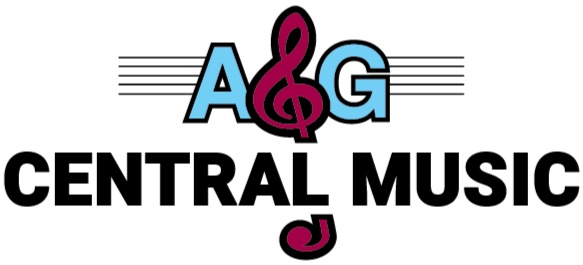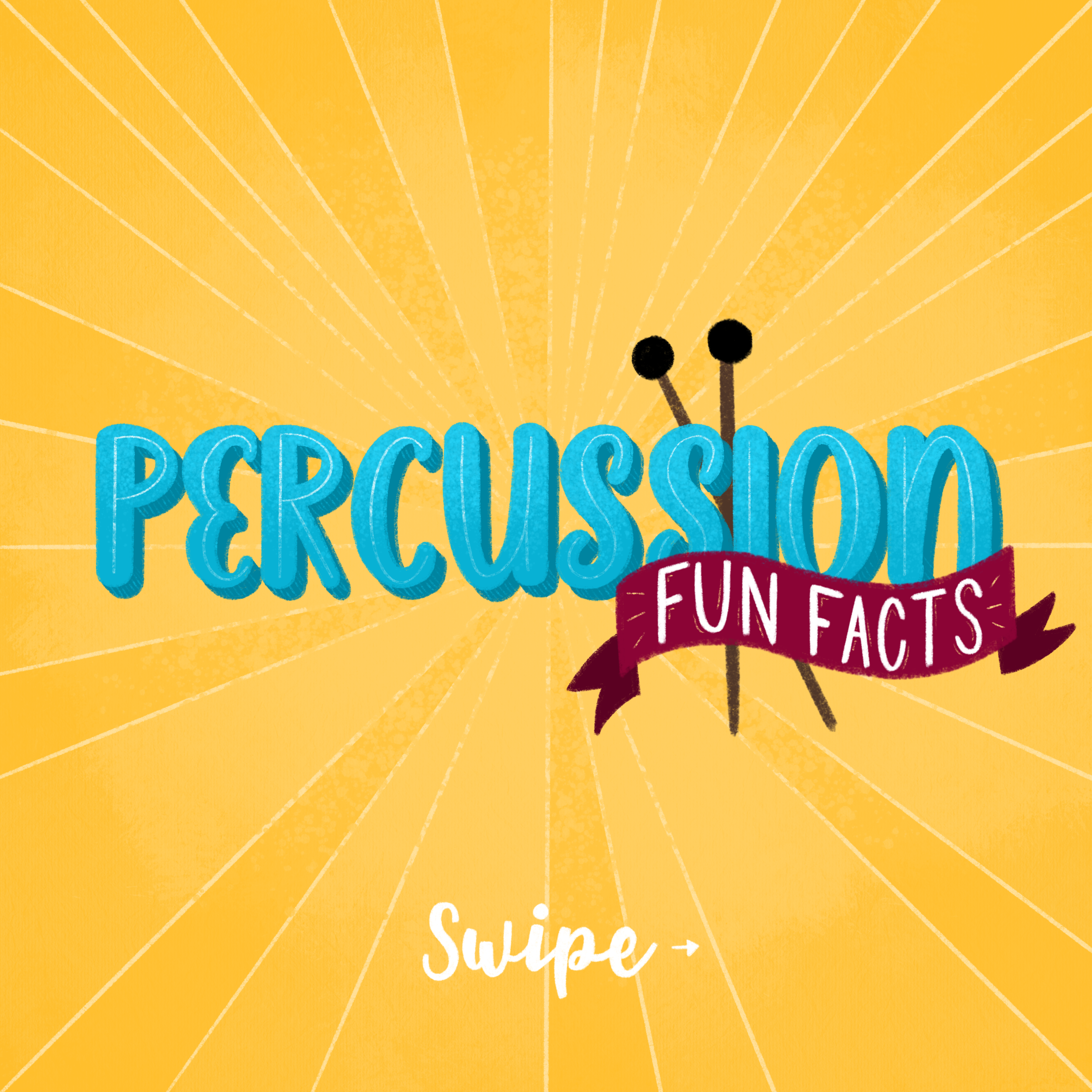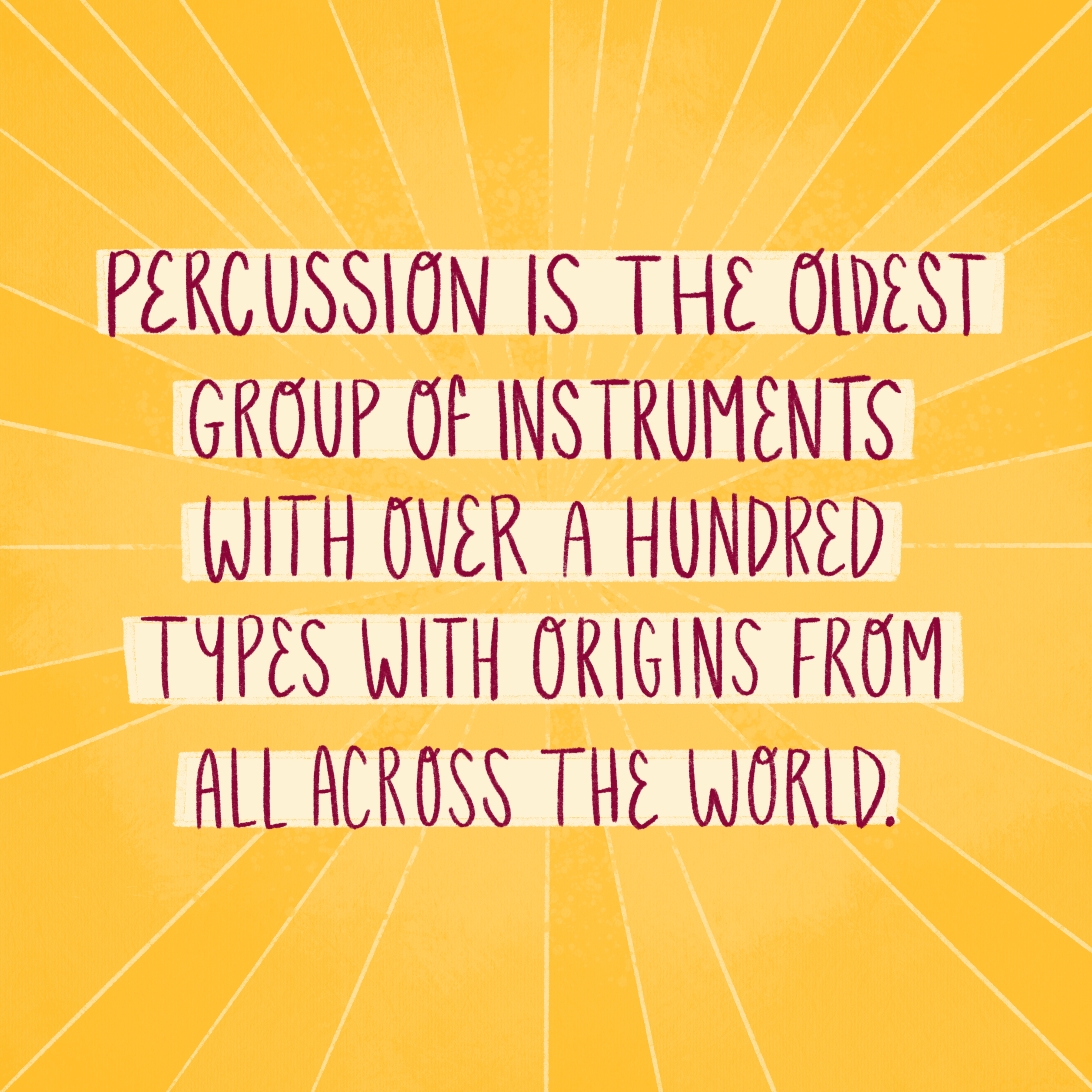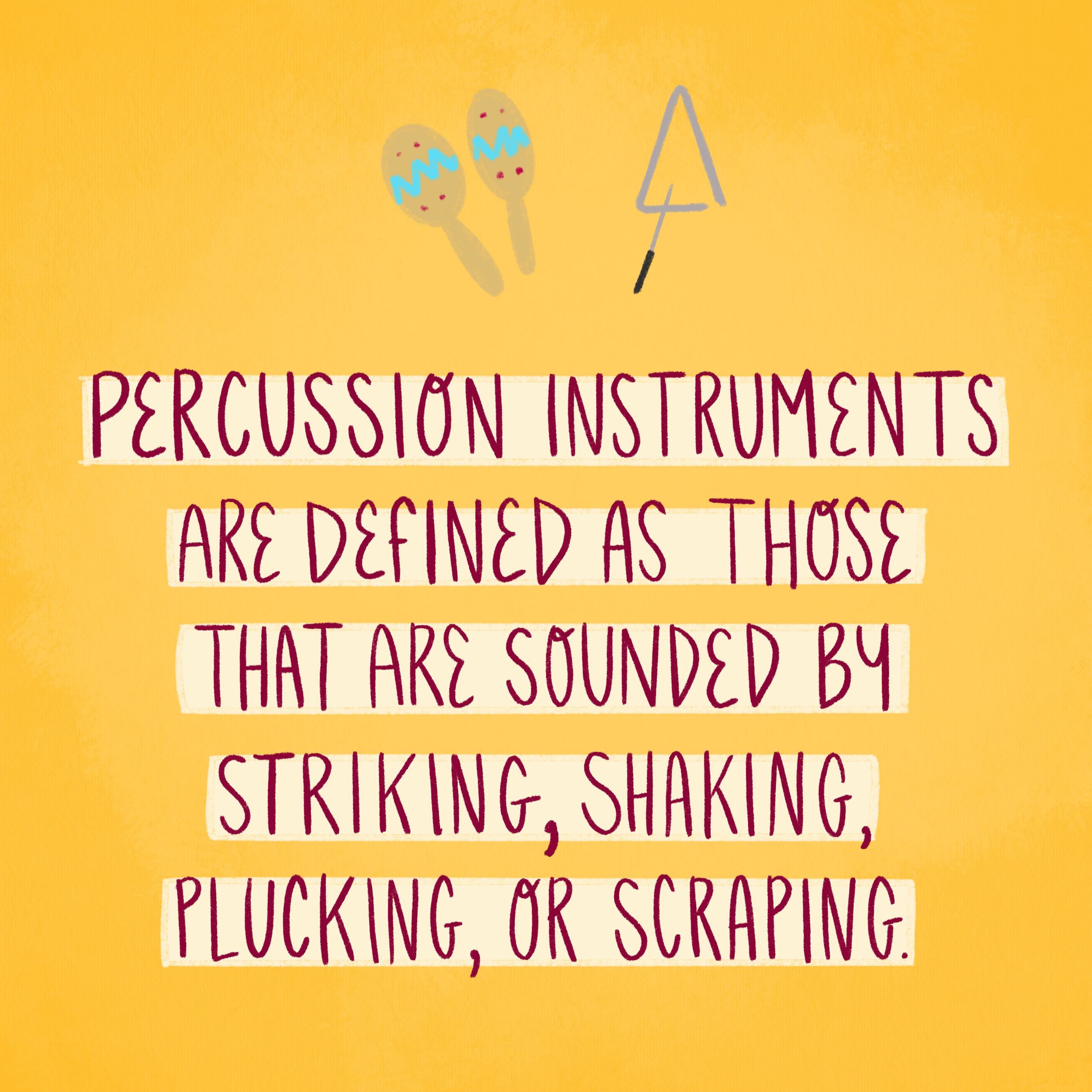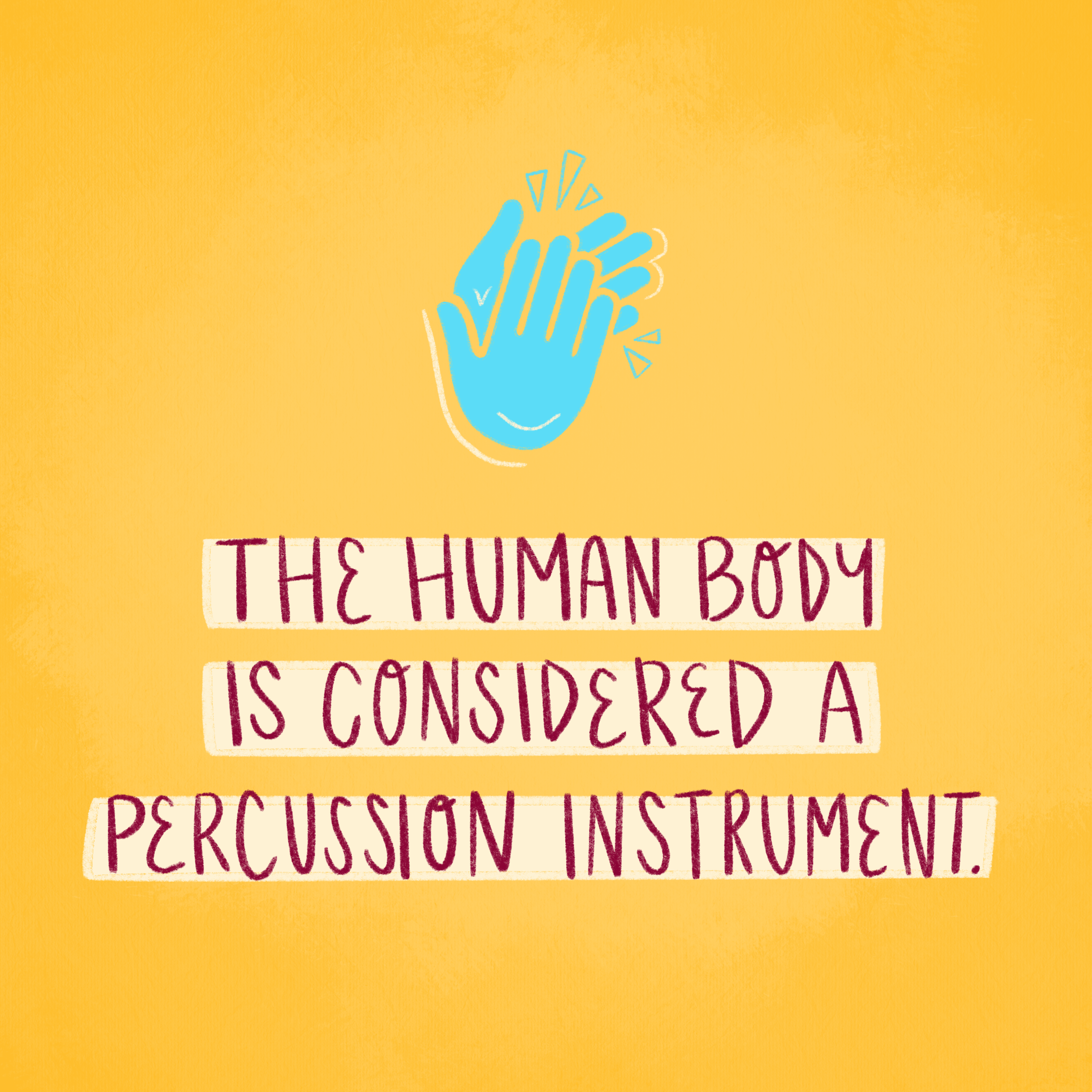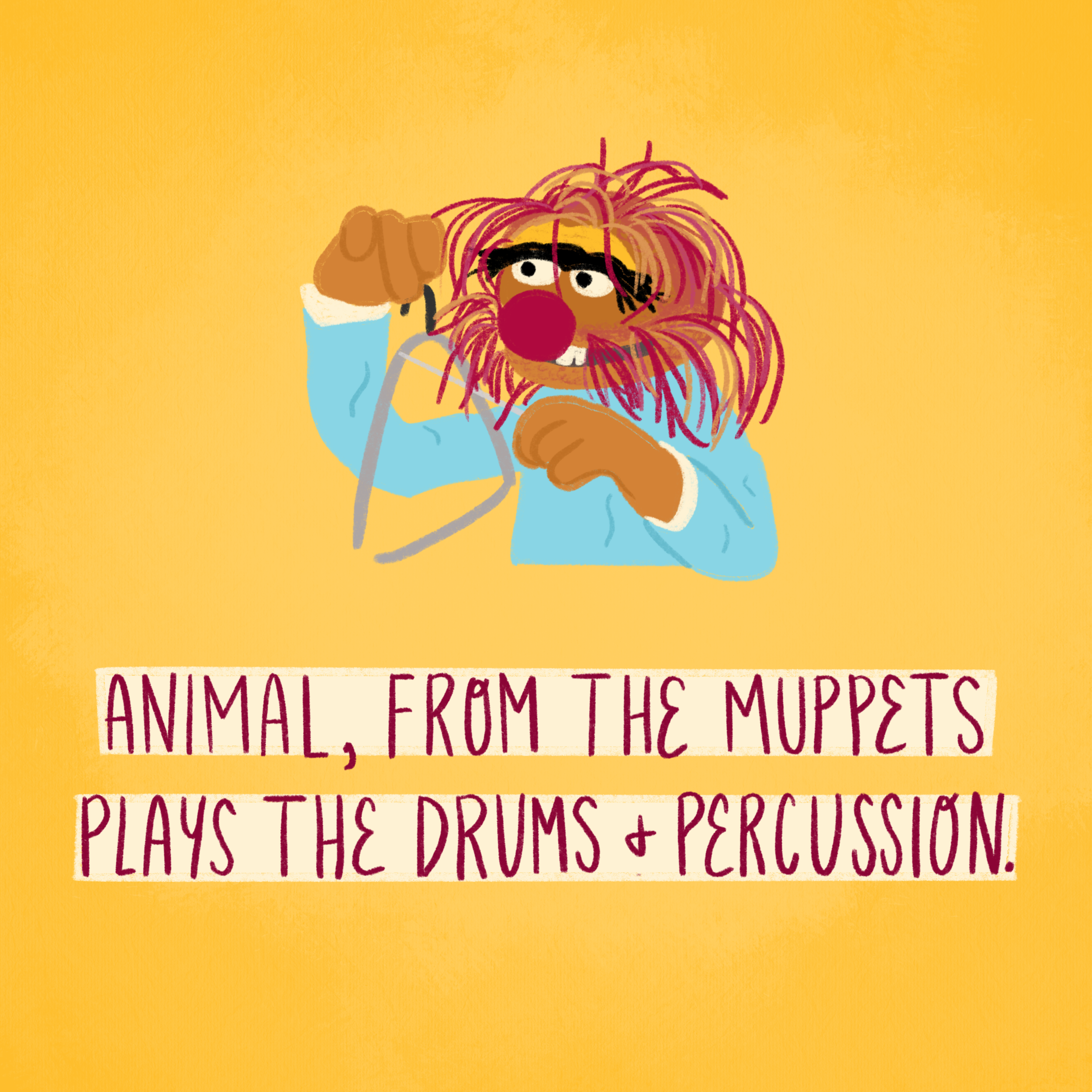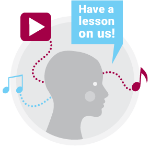Percussion
There are literally thousands of instruments that are considered members of the percussion family. And even with all those different kinds, there are really only two types of percussion instruments: those that make a definite pitch, and those that don't. While timpani, marimbas and xylophones play specific pitches like C# or A, cymbals, triangles and snares make sounds like 'crash,' 'ding,' and 'bam.' In general, percussion instruments have been around for thousands of years and have been used for religious ceremonies, frightening the enemy in warfare and to embellish an orchestra or concert band.
Why percussion?
It is important to understand that if you chose to play percussion, you will be choosing to learn a whole family of instruments. In the beginning, most students learn to play a definite pitch instrument like the bells. Students will learn other instruments as their skills increase.
Keyboard Percussion Instruments
Pitched percussion instruments all work in a similar manor. Tuned bars are mounted on a frame and arranged like a piano keyboard. Each bar plays a different pitch. Bars can be made of metal like on a vibraphone or the bells. Other instruments like the xylophone and marimba use wooden bars. On many of the instruments, the sound goes through a resonator, which amplifies the sound. Sometimes featured in orchestras, keyboard percussion can double soprano voices like flutes or violins.
Snare Drum
Originally used in marching bands, the snare drum is made from a cylindrical piece of wood, metal or plastic. The instrument is hit on the top and there are small pieces of wire on the bottom that rattle to make the distinct snare sound. The first version of the snare drum was called a tabor and was invented in the 12th century. It is used a lot in orchestral music, and is also part of the marching band.
The parts of a snare drum:
The head is where the player hits his drum sticks, which creates the sound.
The snares are pieces of wire stretched across the bottom of the drum and are tightened or loosened by the snare switch also called the throw off.
The stand holds the drum in place.
Bass Drum
The bass drum is the largest drum in most orchestras and was rare in European music until the 18th century. It is usually supported on a stand and can be adjusted for the performer. Although it looks relatively simple to play the bass drum, it requires a great deal of concentration and excellent rhythm. It is often used to keep basic time in marches or for certain embellishments in orchestral pieces. The loud boom of a bass drum can sometimes be felt.
How to pick your first percussion instrument:
Getting your first instrument is a big deal; here are some things to consider. What instrument is right for me? It is important to talk with your music teacher to determine what equipment you will need. Many students need a practice pad for practicing drumming and a set of bells for learning pitched percussion. New or used? Your local music retailer will be able to advise you on pre-loved instruments that they have in stock. This can be a worthy alternative. Beware of internet deals! You will not get the support, advice and service you will get from your local retailer.
Want To Learn More About Percussion?
Watch as a professional instructor demonstrates how to properly get started with your percussion kit. Click Here.
